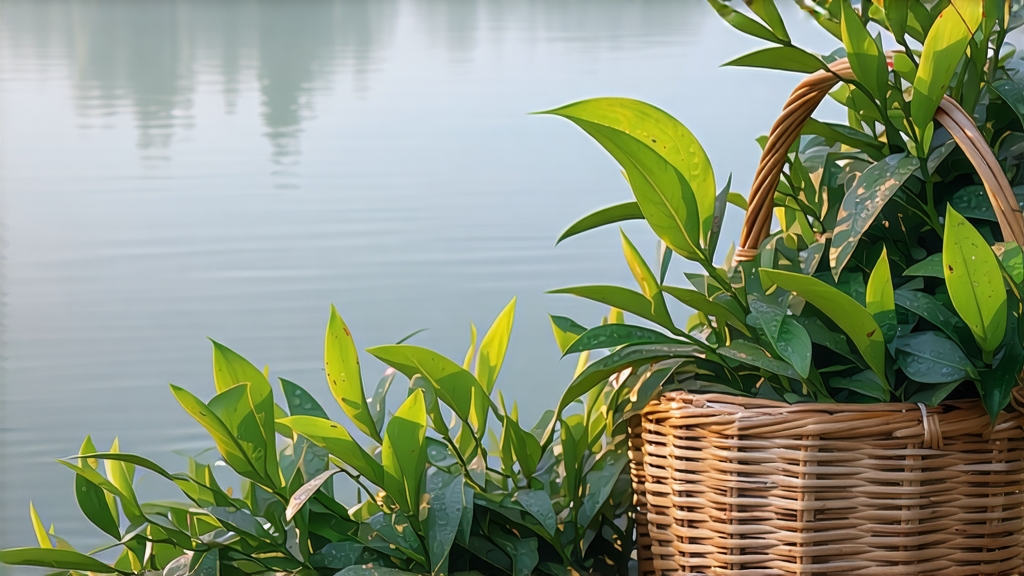
Longjing, literally “Dragon-Well,” is the most celebrated among China’s more than one thousand green-tea styles. Its fame rests not on myth alone but on a convergence of micro-climate, quartz-rich soil, and seven centuries of refining craft. To the Chinese palate it is the benchmark of freshness; to the global tea traveler it is the first cup that makes the concept of “terroir” drinkable.
History
The earliest written record appears in the late-Song chronicle “Notes of Hangzhou,” where monks at the Lion Peak temple bartered tea for salt. When the Qianlong Emperor visited West Lake in 1751 he planted eighteen bushes beside the Dragon-Well spring itself, declaring the site an imperial garden. Those same bushes still survive, fenced but leafy, and their spring harvest is auctioned by the gram. Republican-era scholars codified three original villages—Shi (Lion), Mei (Plum), and Weng (Elder)—giving rise to the core “West-Lake Longjing” appellation. After 1949 the state expanded plantings to Qiantang and Yuezhou counties, but only the 168 km² core zone may bear the protected geographical indication today.
Cultivars
Traditional Longjing is made from the Longjing #43 clone, selected in 1972 for its early budding and chestnut note. Heritage gardens still keep the older “group seeding” (qunti zhong) bushes whose leaves are smaller, more tapering, and deliver a lanolin-like sweetness after rain. A third cultivar, Zhongcha 108, trades some fragrance for frost resistance and is planted on higher, north-facing slopes. Each cultivar is micro-ferried to the same pan but whispers a different story: #43 sings high floral, qunti hums stone-fruit, 108 offers a cool mineral echo.
Plucking
The clock starts at Qingming, the early-April tomb-sweeping festival. Only the bud plus the unfolding first leaf (“one flag, one spear”) is taken, ideally before 10 a.m. when dew still pearls. A skilled picker can gather 600 grams of fresh leaf per hour; it takes 3.5 kg of this to yield 500 g of finished tea. Afternoon leaf is avoided because rising starch levels mute the sought-after umami.
Withering
The baskets are laid under shade cloth for two to four hours, reducing moisture by about 10 %. This softens the grassy edge and coaxes a faint cucumber note that will later marry with the nutty roast.
Pan-Firing: The Heart of Longjing
Unlike most green teas that are drum-baked, Longjing is hand-pressed against a cast-iron pan heated to 80 °C, then 60 °C, then 40 °C in three sequential passes. The master’s wrist performs ten distinct motions—tap, press, rub, flick, sweep, pinch, shake, toss, rake, and embrace—each lasting three to four minutes. The goal is to arrest oxidation while forming the signature flat, smooth sword shape. A single error—one second too long or one degree too hot—scorches the leaf and locks in bitterness. Apprentices spend three years learning only the “embrace” motion, cupping leaves against the pan to polish their jade-green sheen.
Roasting & Resting
After shaping, the tea is cooled on bamboo trays, then given a gentle 50 °C “foot-fire” roast to stabilize moisture at 5 %. It is left to season for two weeks in lime-lined earthen jars; this allows residual heat to dissipate and the famous chestnut aroma to bloom.
Grading
West-Lake Longjing is classified by village and harvest day. Pre-Qingming (Mingqian) leaf is the most coveted: tiny, pale, almost silvery, yielding a liquor the color of early spring willow. Guyu-grade, picked before the grain-rain festival around 20 April, is slightly larger but still tender. Anything later is called “spring tail,” still fragrant but lacking the electric green sweetness. Beyond the core zone, “Zhejiang Longjing” follows the same craft but grows on alluvial plains, giving a broader, spinach-like cup.
Water & Vessel
Ideally use 250 ml of early-spring water at 80 °C; if your tap is hard, filter and rest it overnight. A tall, straight glass (250 ml) is traditional because it lets the “tea ballet” unfold: leaves stand upright,